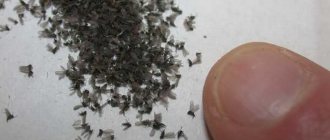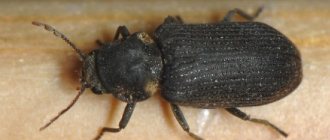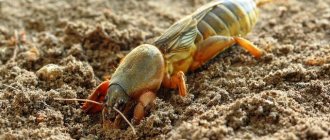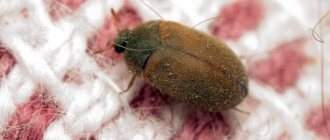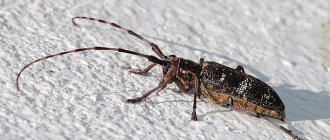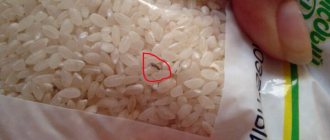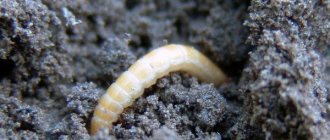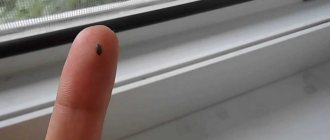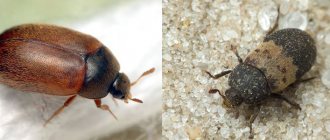The appearance of a wireworm on a site is difficult to confuse with anything else. This pest undermines tubers and shoots of plants, and it is not easy to get it, because it can burrow into the ground to a depth of several meters. But even such a scourge can be fought.
The wireworm is not such a “promoted” enemy of potatoes as the Colorado potato beetle. They write a lot about the latter and every season they advertise another new means of control that is “guaranteed to get rid of the beetle.” And it seems that no one cares about the inconspicuous click beetles and their larvae - wireworms. That is why their biology has been poorly studied, and control measures are few and ineffective. Yes, and it is not possible to detect the wireworm right away, and when it catches the eye of gardeners, the plant usually cannot be saved. However, you can fight this scourge. But let's study it in detail first.
What does a wireworm look like and why is it dangerous?
Adults - click beetles - are small, up to 20 mm in length, oblong, spindle-shaped insects. They have a dark brown, brown or deep purple body color. The flight of beetles continues from spring until early August. Click beetles feed on the leaves of cereal plants and do not cause much damage. During the season, the female lays up to 200 eggs, and it is from these that the main enemy of potato plantings, the wireworm larva, appears.
In addition to the huge number of “freeloaders” with which your site is instantly filled, another problem appears. Click beetle larvae, or wireworms, as they are also called, are real long-livers of the insect world. They live quietly in the soil for up to 5 years, provided the climate is suitable and food is available. It is very difficult to detect them - wireworms make deep and winding passages, hiding from any threat.
The larvae of the first year of life are practically not dangerous - they are still small and cannot harm plants. The maximum threat is posed by 2-4 year old larvae. They grow up to 20-30 mm, becoming like strong worms with clearly segmented bodies. Their color changes from light yellow to brown, and the body hardens (the wireworm is very difficult to crush, it’s easier to tear it in half).
The wireworm is an omnivore; it doesn’t matter what it eats. Literally everything suits him: potatoes, tomatoes, carrots, onions, cabbage, beets, corn, wheat, rye, etc. It also does not matter at what stage of development the plant is - whether it is a planted seed or a tuber. Wireworms damage roots, young shoots, stems - in short, everything they can “get to”. Crop losses amount to 65-80%, and it is possible that the situation will repeat itself next year, because the larvae remain over the winter, and in the spring they begin to eat plants with renewed vigor.
What crops does the pest affect?
Wireworms damage the seeds and underground parts of many vegetable and ornamental plants.
Potato tubers, dahlias, gladioli, beet roots, carrots, strawberry roots, corn, daffodil bulbs, tulips, and iris rhizomes are subject to their invasion . Wireworms can chew through tomato .
Wireworm in potatoes
Wireworm in potatoes
Potatoes are the wireworm's favorite vegetable. Together with the Colorado potato beetle, these are the main crop pests. Once settled in a potato plot, wireworms can damage up to 60% of the tubers. Juicy potato roots are also a source of food for beetle larvae. Because of this, nutrition in the bushes is disrupted and the tuber yield is reduced.
Fungi, bacteria and nematodes settle through holes in the pulp. Damaged tissue around the passages turns black, and the tubers become inedible.
How to detect wireworms on the site
Of all the crops, the wireworm loves potatoes most and damages its tubers the most. You can understand that you will not be the first to enjoy potatoes grown on your own plot by several signs:
- freshly dug tubers are dotted with narrow through holes and small dark depressions on the skin;
- if single damaged and wilted plants begin to appear among healthy potato bushes, wireworms are clearly involved. The fact is that the larva migrates well in the vertical direction (burrowing to a depth of 1-2 m), but poorly in the horizontal direction. It does not move further than 20 cm from the feeding site, so it usually damages individual plants, rarely entire strips or beds;
- individual wireworm specimens can be accidentally dug up while working in the garden. During the period of activity, the wireworm lives in the upper layers of the soil, at a depth of 5-10 cm. Adults are very similar to useful ground beetles, but they can be distinguished by the characteristic click that the bug makes when it turns over from its back to its abdomen.
Preventive measures to combat wireworms
Avoiding the appearance of wireworms on a site is easier than dealing with its large population. To do this, you need to apply a number of preventive measures:
- observe crop rotation - this is especially important when planting potatoes. Often a certain plot of land is allocated for it and potatoes are planted there year after year, surprised by the constant crop failure;
- harvest root crops on time and do not leave them for the winter - by eliminating the source of food and heat, you will deprive the wireworm of a comfortable wintering;
- reduce the acidity of the soil - you can determine that the soil has become highly acidic by looking at the indicator plants growing on the site, for example, horsetail, sorrel and plantain;
- attract wireworm and click beetle enemies to the area . First of all, these are birds. Starlings, crows, blackbirds, doves, rooks, wagtails and tits are especially fond of wireworms. The main means of attracting birds to the site are birdhouses. They destroy wireworms and ground beetles, which are carnivorous insects and happily feed on their “brethren”;
- destroy weeds . Burdocks and wheatgrass are a ready “home” for the larvae of the click beetle. Therefore, they need to be destroyed first, just like any other weeds;
Signs of plant infection
The voracious larvae of the click beetle damage seeds, roots, tubers and root crops of plants .
eat the embryo of the seeds , leaving a thin shell and deep holes on the sprouts. The pest gnaws holes in tubers and root crops and makes complex moves. This promotes the penetration of pathogens and decay.
In seedlings, the wireworm damages the tender roots and gnaws through the main stem . Plants wither and die.
The wireworm causes the greatest harm in spring and summer; at the beginning of autumn, the pest leaves for the winter.
What repels wireworms
Click beetles and wireworms are repelled by the following crops:
- green manure - wireworms do not like mustard, so plant it in the fall, wait until it grows to 10 cm, then cut it and put it in the ground for the winter. Repeat this operation in early spring and also plow mustard into the soil. A rotted plant releases essential oils that repel wireworms. You can also plant rapeseed, rapeseed, buckwheat, spinach and sweet clover;
- legumes next to potatoes . For some reason, the omnivorous wireworm does not favor peas, beans and beans. In addition, these plants will additionally enrich the soil with nitrogen;
- It is believed that the wireworm cannot tolerate the aroma of dahlias. Even wheatgrass cannot stand proximity to these flowers.
People's secrets
In order to completely survive the wireworm from their garden, the owners divide the plot in half. One part is sown with rye (peas, mustard, buckwheat), and the other is used for planting (rows of crops are “diluted” with beans, dahlias, marigolds).
The next season, the same planting principle is repeated, only the area of the sown part is planted with garden crops (the parts are swapped: where they were sown, they are used for a garden). Some gardeners throw beans into the holes with potatoes to scare away the wireworms from the tubers.
Fighting with folk remedies is not only safer, but also much more effective, since the methods can be used regardless of the phase of crop development (flowering, ovary formation, period before harvest).
Baits and traps against wireworms
The wireworm is willingly “led” to all kinds of traps. This feature has long been successfully used by lovers of non-chemical pest control products.
- Take old (spoiled) potatoes and soak them in any insecticide for 24 hours. Then bury it in the ground in places where wireworms accumulate and mark these places with sticks. After two days, collect the potatoes into which the wireworm has crawled and destroy them.
- Place pieces of potatoes or carrots in an unnecessary glass jar with a capacity of up to 0.5 liters and bury them, leaving the neck at ground level. Both larvae and adults will fall into such an improvised trap. The latter, however, can fly away, so it’s better to cover the neck with paper - then it will be more difficult for the insect to get out.
- You can also string pieces of potatoes, beets and carrots onto a wire. In the spring, before planting vegetables, bury such a “kebab” in the ground to a depth of 10 cm along the entire length of the bed. After 2-3 days you will receive an excellent treat for chickens, consisting of larvae and vegetables.
- Click beetles hide during the day in moist and shady places. Lure them in the spring with piles of grass or manure, and a few days later, during daylight hours, collect them and throw them into the fire. Do the same in the fall, just let the grass and manure sit until the cold weather.
- The permanent location of wireworms is young seedlings of corn, oats, barley and wheat. 1.5-2 weeks before planting potatoes, you can sow a small number of these crops and then dig them up along with the pests. New plants can be planted throughout the summer by pre-treating the seeds with an insecticide. Wireworms die from such a poisonous treat. The main thing is not to forget that the plant is inedible and cannot be eaten.
Results
The wireworm is active most of the winter and will feed on plant debris. To get rid of it, the soil is dug up in the fall, weeds and mown tops of cultivated plants are collected and placed in a composter or burned. To combat wireworms, you can use mineral fertilizers (potassium chloride or ammonium nitrate), wood ash, lime, and dolomite flour. Treatment with chemicals gives good results. The fight against the pest must be systematic, then in a few years it will be possible to get rid of it completely.
Biological and chemical preparations against wireworms
Gardeners have been fighting wireworms for many years. Therefore, there are many methods of fighting the so-called. “biological” basis, without the use of chemicals. For example:
- Ground eggshells are one of the most versatile and budget-friendly remedies for wireworms. Lay it out throughout the site throughout the season, and the wireworm will avoid crops;
- pickle the holes before planting . Use 500 g of nettle tincture per 10 liters of water or 200 g of dandelion tincture per 10 liters of water. This amount is enough to process 20 holes for potatoes. Treat every 2-3 days for a week;
- reduce soil acidity . When digging and loosening the soil, add lime, chalk or ash, and once every few years use dolomite flour;
- add ammonium nitrate or ammonium sulfate . The use of such preparations containing ammonia forces the larvae to migrate deeper underground, escaping unfavorable conditions. It is enough to apply 20-30 g per 1 sq.m;
- water the plants with a solution of potassium permanganate at the root . A weak solution is enough - 2-4 g per 10 liters of water; add no more than 200-300 ml to one well.
We recommend using chemicals as a last resort. Excessive use of “chemistry” will not benefit your plants, so it is better not to abuse it.
Some formulations can be prepared independently.
- Spread 5 kg of granular superphosphate in a thin layer on plastic film and prepare a solution for its treatment. To do this, take one of the following drugs: Prestige (or Prestigator) – 70-100 ml, Tabu – 8 ml, Terradox – 40-100 g or Commander+ (25+25 ml) and add it to the water-acetone solution (800 ml water and 200 ml of acetone). Spray the resulting mixture with superphosphate and let it dry. The resulting preparation will be enough for an area of 100 sq.m., if the “poison” is spread using a belt method.
- In strict accordance with the instructions, you can use insecticides, such as Barguzin - 15 g per 10 sq.m, Pochin - 30 g per 10 sq.m, you can make a trap based on Zemlin (a 0.5-liter glass jar is filled three-quarters with sawdust , and then add insecticide according to the instructions).
Wireworm is a dangerous and voracious pest that can cause irreparable harm to garden crops. However, you can fight it. Only this struggle must be systematic and regular. And then the worst enemy will not dare to encroach on your harvest.


